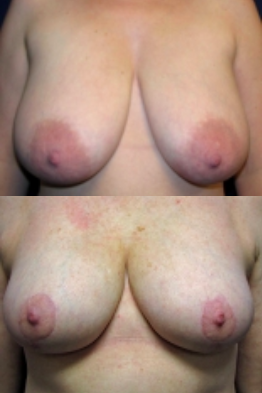Home|Blog | How Is Areola Reduction Performed?
How Is Areola Reduction Performed?
Many women who are interested in undergoing either breast reduction surgery or breast lift surgery also express concern regarding the enlarged size of their nipple-areola complex. Their large areolas—often the result of pregnancy, breastfeeding, substantial weight changes or the ever-dreaded genetics—can be a source of embarrassment and physical dissatisfaction.

Areola reduction is an intrinsic part of https://www.arizonabreast.com/procedures/reduction/https://www.arizonabreast.com/breast/reduction-scottsdale-phoenix/”>breast reduction and breast lift surgery in most cases. This procedure can return your nipple-areola complex to a more aesthetically pleasing and proportional size and placement.
What Is Areola Reduction?
The areola is the “darker” pigmented area surrounding the nipple that is situated near the center of the breast at its most projecting point. In many situations, it becomes overly large, asymmetrical, and droops down along with the underlying breast tissue. When this occurs, areola reduction can be performed to reduce the size of the areola while enhancing the placement and symmetry of the areolas.
While this condition is most often seen in women, it is possible for men who experience gynecomastia (enlarged male breasts) also to have enlarged, asymmetrical, or drooping areolas. During this procedure, the part of the peripheral areola is removed, leaving the center of the areola, as well as the nipple, in place and attached to the tissues. This helps to ensure that there will be little to no nerve damage that can harm breast or nipple sensation in any way.
Combining Areola Reduction with Breast Procedures
While areola reduction can be performed on its own, it is most commonly performed as part of either a breast lift or a breast reduction. In both of these surgeries, an inverted-T incision (also known as an anchor incision) is most commonly performed. This technique involves incisions made around the areola, then down to the crease at the bottom of the breast and then along that crease. The areola will be reduced in size as well as lift up to a more appropriate position on the breasts.
While this procedure is not always required or needed during breast lift or breast reduction surgery, reducing the size of an enlarged areolas can provide a more aesthetically pleasing appearance of the breast and with it, greater confidence, satisfaction and joy.
